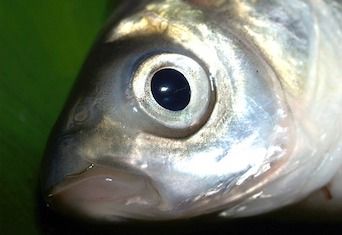Invasive Asian Fish Tapeworm Problematic for Live Baitfish Industry
The presence of the Asian fish tapeworm Schyzocotyle acheilognathi in live baitfish could spell trouble for Michigan’s baitfish industry.

In Michigan’s Great Lakes, the introduction of invasive pathogens and species has long threatened the region’s native species. The live baitfish industry poses an especially high risk of introducing foreign invaders. This industry infuses millions of dollars into Michigan’s economy annually yet can introduce such harmful pathogens as viral hemorrhagic septicemia virus (VHSv).
Cyprinids (minnows, carps, and their relatives) are used as baitfish and could be vectors of Schyzocotyle acheilognathi, the invasive Asian fish tapeworm. S. acheilognathi was reportedly introduced into the United States in 1975 and causes significant intestinal damage, including occlusion and pressure necrosis. Current Michigan fish health inspections require testing for VHSv and other parasites, but not S. acheilognathi, in baitfish.
RELATED:
- Jellies: Our Original Ancestor?
- The "One Health" Framework Can Be Used to Identify Zoonotic Endoparasites
Little empiric evidence exists on the baitfish industry’s potential for introducing invasive species and pathogens. “The need to inspect this pathway for fish health threats is critical,” wrote the authors of a recent Parasite and Vectors study on S. acheilognathi. “A need to determine the prevalence of S. acheilognathi exists and needs to be addressed,” they noted.
From September 2015 to June 2016, the study’s authors collected 5400 cyprinid baitfish (90 lots of 60 baitfish each) from 78 live baitfish stores in Michigan and classified the fish by source (in-state or out-of-state). The baitfish’s gastrointestinal tracts were examined for cestodes. Cestodes matching S. acheilognathi morphology underwent further molecular and phylogenetic analysis. S. acheilognathi morphology is as follows:
- Pyramidal-shaped flattened scolex with two bothria (grooves)
- Segmented strobila
- No distinct neck
- Posterior scolex wider than anterior strobila
Results
Overall, 53% of the baitfish lots were positive for S. acheilognathi. Of the baitfish species analyzed, only emerald shiners, golden shiners, and sand shiners contained the tapeworm.
S. acheilognathi attached to the anterior intestinal walls and was often visible to the naked eye; most tapeworm specimens were immature. Infected fish had distended abdomens and intestinal wall hemorrhage.
The prevalence of S. acheilognathi (% infected fish) was highest for emerald shiners (20%); 8% of golden shiners and 1% of sand shiners were infected. Similarly, the abundance of S. acheilognathi (number of parasites/fish) was highest for emerald shiners, followed by golden and sand shiners. Interestingly, the intensity of S. acheilognathi infection (number of parasites/infected fish) was highest for golden shiners, which had nearly 7 parasites per infected fish.
Compared with out-of-state baitfish, in-state fish had significantly higher prevalence and abundance, but not intensity, of S. acheilognathi. Notably, S. acheilognathi prevalance was nearly 18% in-state baitfish but only 3.5% in out-of-state baitfish.
Implications
The study’s findings demonstrate the presence and wide distribution of S. acheilognathi in cyrpinid baitfish, the authors concluded, and have serious implications. For example, fish stocking programs in the Great Lakes basin that feed S. acheilognathi—infected baitfish prior to release could contribute to S. acheilognathi expansion and further imperil the threatened and endangered species in that region.
The authors recommended using emerald, golden, and sand shiners to monitor S. acheilognathi prevalence and spread in the Great Lakes region. To mitigate this spread, the authors proposed several strategies:
- Include S. acheilognathi in baitfish health inspections.
- Collect baitfish only from S. acheilognathi—free sites that are monitored continuously.
- Strongly prohibit dumping unused baitfish into public waters.
- Implement public education campaigns on the dangers of dumping unused baitfish.
Dr. JoAnna Pendergrass received her Doctor of Veterinary Medicine degree from the Virginia-Maryland College of Veterinary Medicine. Following veterinary school, she completed a postdoctoral fellowship at Emory University’s Yerkes National Primate Research Center. Dr. Pendergrass is the founder and owner of JPen Communications, a medical communications company.